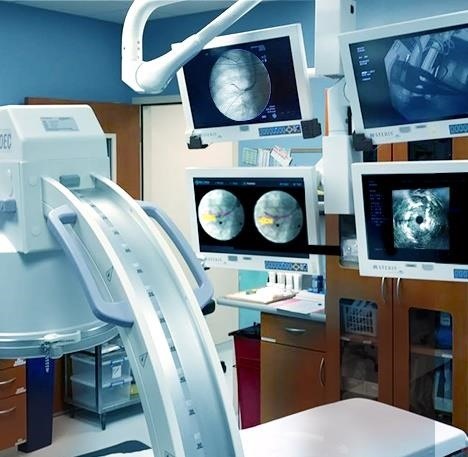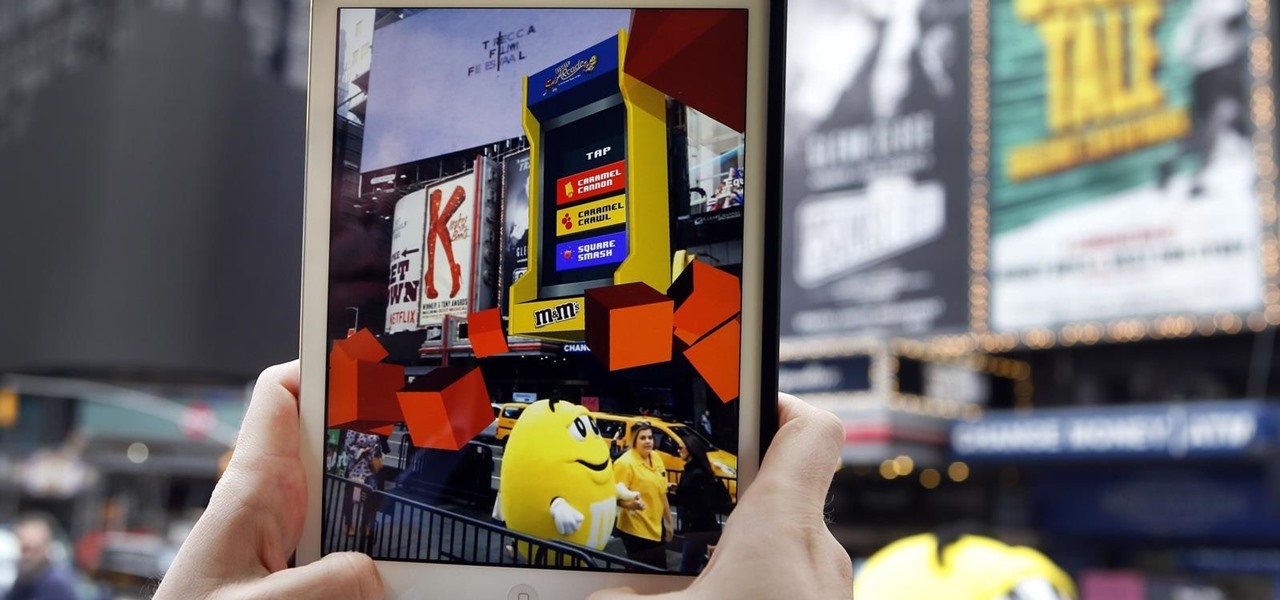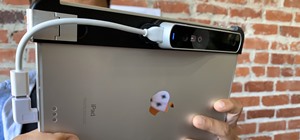Marketing and healthcare, two of the leading industries in the adoption of augmented reality, continue to demonstrate applications for the technology in their businesses. Meanwhile, improvements to augmented reality devices are just around the corner with new developments from two display makers.
M&M's Promotes Caramel Release with AR Arcade
Last week, M&Ms introduced its new caramel-filled variety of candy by treating consumers to gaming via augmented reality. By scanning advertisements in New York's Times Square or packages of M&M's Caramel with the Blippar app for iOS or Android, consumers can gain access to M&M's ARcade, which consists of three retro-styled mini-games.
Can't find a pack the new flavor? Scanning an image of the packaging works as well.
LungVision Gains FDA Approval
Body Vision Medical announced this week that they have received clearance from the US Food and Drug Administration (FDA) to market its LungVision augmented reality imaging system. LungVision provides physicians with real-time navigation for bronchoscopic procedures.
"Body Vision developed unique technology that combines the intelligence of navigation with the simplicity of fluoroscopy," said Dr. Kyle Hogarth, an FCCP associate professor of medicine and the director of bronchoscopy at the University of Chicago, via a news release. "It enables effective localization and enhanced biopsy of lung lesions, upgrading the standard methods used in our daily practice."

Dr. Sean Stoy of the University of Chicago Medical Center will present his clinical experience with LungVision to participants of the American Thoracic Society meeting, scheduled for May 19–24 in Washington, DC.
Suppliers Pushing Boundaries for AR Displays
On Monday, display maker VueReal unveiled a 4K micro-LED array with the highest pixel-per-inch emissive display at 6,000 ppi. Developed with the company's Continuous Pixelation technology, the displays offer high contrast and low power consumption at a lower cost and within a smaller footprint compared to DLP displays.
Dr. Reza Chaji, CEO and founder of VueReal, said in a news release:
This technology can miniaturize the augmented reality (AR) devices such as head mounted displays (HMD) and heads up displays (HUD). This is essential for HMD devices, as they should be comfortable, fashionable and small to benefit from mass adoption. Due to significant demand in such display products from our partners, we plan to produce displays based on this technology in 2018. These displays offer high reliability and low power consumption at higher brightness (10,000s nits) required to compete with ambient conditions for AR applications.

Speaking of displays, eMagin Corporation disclosed that it will demonstrate its Active Matrix OLED microdisplay at the upcoming Society for Information Display (SID) Conference this month at the Los Angeles Convention Center. The full color, 2,000 x 2,000 pixel panel has a maximum brightness exceeding 5,000 nits.
"The development of this display is a significant step towards eMagin's commitment to be a leader in the OLED microdisplay industry," said Andrew Sculley, eMagin CEO, in a news release. "We believe the performance of this display surpasses anything in the market today by a wide margin. It is drawing tremendous interest from the consumer VR and AR industry where high brightness and high resolution are the key requirements."
Every Tuesday, Next Reality gives readers a rundown of the augmented and mixed reality news briefs from the preceding week that we didn't cover already. This way, you'll never miss anything of importance in the Next Reality landscape, and will always know what's going on with new augmented and mixed reality tech and applications. You can browse previous Brief Reality reports, too, if you'd like.
Just updated your iPhone? You'll find new features for Podcasts, News, Books, and TV, as well as important security improvements and fresh wallpapers. Find out what's new and changed on your iPhone with the iOS 17.5 update.























Be the First to Comment
Share Your Thoughts